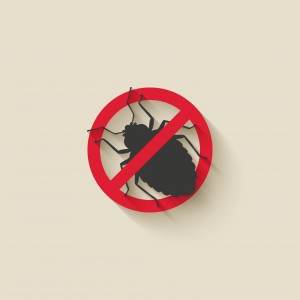Last month, we continued our examination of HOA Horror stories about roaches, bedbugs, and rats. This week, we  discuss how condo and homeowner associations are addressing the rampant bedbug problem infecting the nation.
discuss how condo and homeowner associations are addressing the rampant bedbug problem infecting the nation.
Bedbug Compliance Mandated
The city of Chicago passed an ordinance in 2013 to help quell the growing problem of bedbugs in multifamily housing. With input from the Chicago Department of Public Health, the ordinance requires governing associations of condominium and cooperative buildings to prepare a pest management plan for the detection, inspection, and treatment of bedbugs. The ordinance also requires landlords to provide a brochure on bedbugs to tenants when they are signing a new lease or renewing an existing lease.
New York City now requires owners and managers of properties where bedbug infestations have been identified to inspect and treat units on either side of, above, and below and bedbug-infested unit. They must also use a licensed pest control professional to treat the infestation and employ a variety of treatment strategies rather than depending on chemical pesticides alone.1
If bedbugs persist or occur in multiple apartments in the same building, the department of health will require owners to take additional pest removal steps, including notifying residents that bedbugs have been identified in the building, and also to develop and distribute a building-wide pest-management plan to all residents.
Penalties for noncompliance can quickly add up. Violations will require an owner or manager to appear at a hearing before the city’s Environmental Control Board, where fines may be issued and noncompliant owners may actually end up with liens on their buildings. This is serious stuff – and a process to be avoided at all costs. The US Department of Housing and Urban Development (HUD) ha also published bedbug guidelines for owners and occupants. The guidelines may be found on the HUD website.
Bedbug Treatment
Treating bedbugs is difficult, but not impossible, and depends on the extent of the infestation – whether it’s in one unit or dozens. Treatment options include the application of extreme temperatures, such as freezing or high heat, high-powered vacuuming, steam, and pesticides, or a combination. Many bedbug strains have grown resistant to the pesticides available to treat them. Prices may range from a few hundred dollars to several thousands of dollars for larger infestations.
Contrary to popular belief, bedbugs are not an indicator of poor sanitation. However, excessive clutter provides them with more places to hide and makes them more difficult to treat.
“In an apartment building, the landlord has the authority enforce bedbug services or inspections,” said Sara Kantarovich, technical director and entomologist for Smithereen Pest Management Services in Niles, Illinois. “In a condo building, there’s no one authority who can enforce those kinds of procedures.” Many condo boards and managers won’t even discuss the subject, she said, “They want to keep things quiet. They fear that if word gets out, the value of their property will decrease.”
Association boards must never look the other way when it comes to bedbugs. They must be immediately proactive. The most successful associations will have a strong board that is willing to mandate inspections and remediation. Bedbug control is yet another expense community associations may need to add to their budgets.
1 Tom Soter, “What Do You Do When You THINK Your Co-op Has Bed Bugs?” Habitat Magazine, September 29, 2011.
